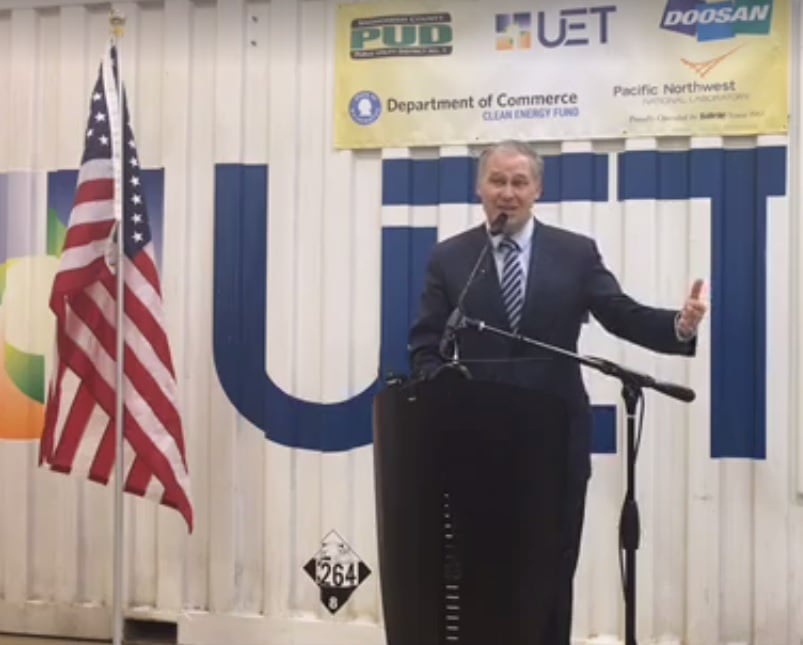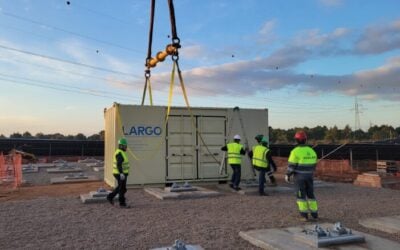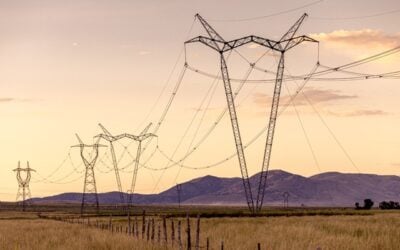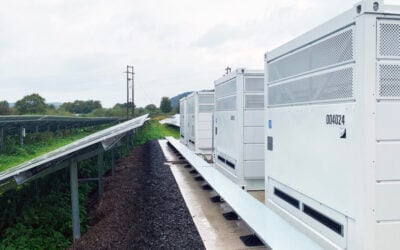
A containerised flow battery dubbed the ‘largest’ such system in the US has been matched for size by another system dedicated last week in Snohomish, Washington.
Mukilteo, Washington-headquartered UniEnergy Technologies (UET) and Snohomish County Public Utility District (SnoPUD) held a ceremony to launch its latest 2MW / 8MWh advanced vanadium flow battery last Tuesday. The event was attended by dignitaries including Washington governor, Democrat Jay Inslee.
Enjoy 12 months of exclusive analysis
- Regular insight and analysis of the industry’s biggest developments
- In-depth interviews with the industry’s leading figures
- Annual digital subscription to the PV Tech Power journal
- Discounts on Solar Media’s portfolio of events, in-person and virtual
Gary Yang, CEO of UET, who took the company from lab-based start-up to commercialisation within six years, touted the development and deployment of the technology, which he hailed as coming from inception to manufacture within the local area.
According to Yang, the company now has projects ready to go in Tennessee, New York, California.
“We already installed two systems in Italy, Germany. We work on similar projects in China,” Yang said, adding that the company now has a total 100MWh of contracted systems in the field or awarded.
Tom Melling of Doosan GridTech said his company was honoured to have been able to help deploy the system and to deploy Doosan GridTech’s Intelligent Controller to the project for its management and control.
“We commend the leadership of the PUD for their thoughtful and proactive development of this kind of system. They helped enable the development of open communications standards for energy storage that benefits all utilities. They’ve helped enable clean tech jobs here in the state of Washington and they’ve prepared the utility for the inevitable growth of renewable clean power here in the state of Washington,” Melling said.
The Snohomish project sits at a substation in Everett, Washington and was procured as part of a SnoPUD grid modernisation programme, along with matching grants from the Washington Clean Energy Fund, which provided more than US$7 million for the project. The system will be owned by SnoPUD.
The challenge of integrating growing levels of renewable energy including wind and solar into base generation, along with congestion in local transmission lines incurring line losses, led local utility bosses to believe energy storage could help solve these problems not just in the local area but around the country. This and another pilot project from UET will help the utility serve 1,000 households for up to eight hours.
From megawatts to mega-jobs
Governor Inslee similarly repeated his excitement that the flow battery had been “invented and made” in Washington.
“We justifiably ought to be beating our chests over this!” Inslee said, adding that he felt Washington was helping inspire the global “clean energy revolution”.
“We understand…the job-creating potential of these technologies. I believe that what we did for aerospace and the Boeing company, what we did in software at Microsoft and others, we now are doing in the clean energy space in the state of Washington. We are not only producing megawatts, we are producing ‘mega-jobs’ because tens of thousands of people are going to work, every morning, inventing the future of clean energy, in the State of Washington”. Inslee also touted the fact that the project will be hosted on an open platform, with learnings made available to the wider world.
UET also worked on the project with Pacific Northwest National Laboratories (PNNL), which will provide analytical and technical support. PNNL also developed the vanadium battery chemistry used in the SnoPUD project.
The project matches for size another recently unveiled pilot project, also a 2MW / 8MWh vanadium redox flow battery, in California. In other news from Washington, the state Utilities and Transportation Commission (WUTC) has just closed its solicitation of comments from stakeholders regarding how energy storage is treated by investor-owned utilities’ (IOUs) in their integrated resource planning (IRP).






